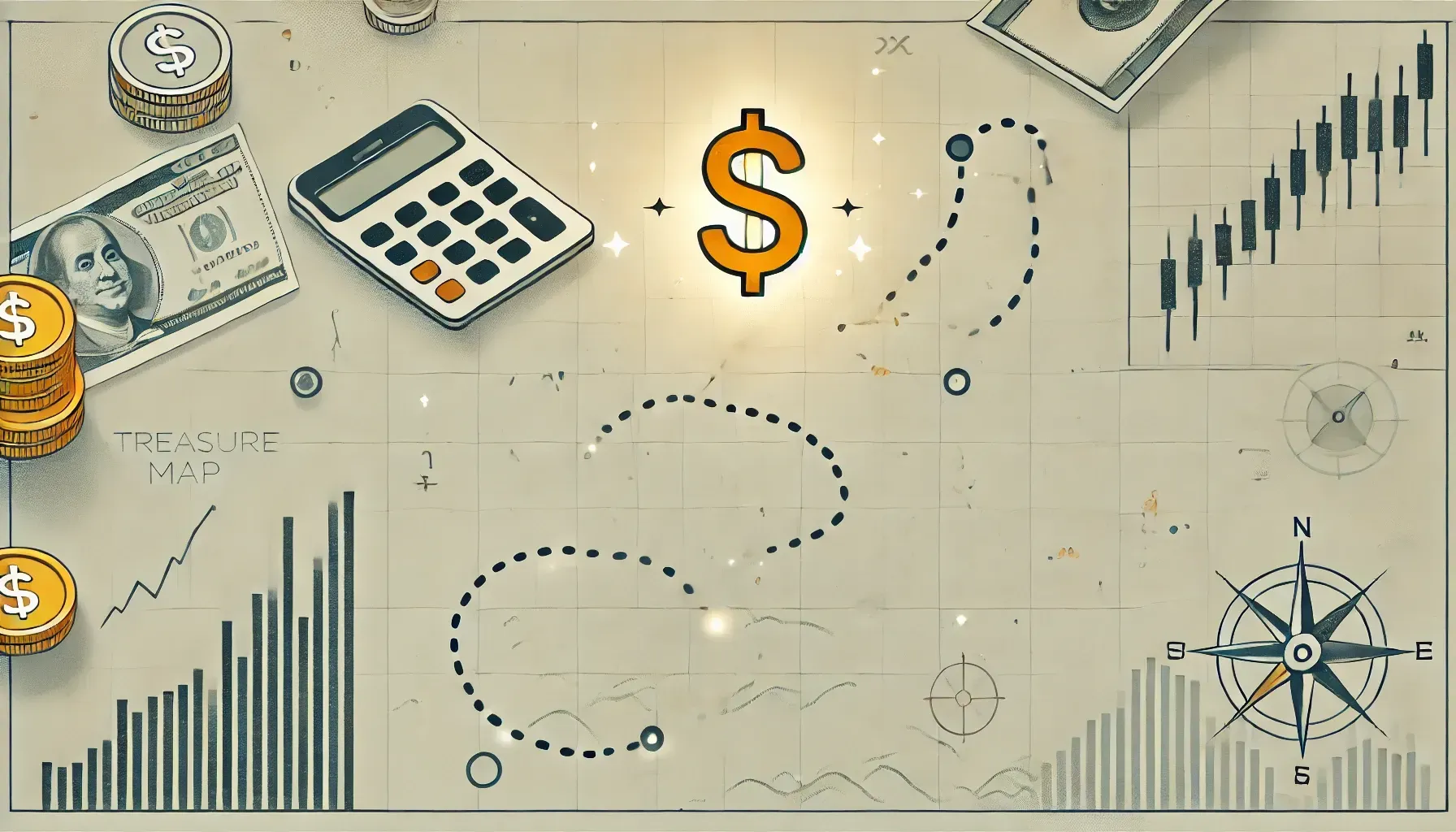Intrinsic value is a fundamental concept in investing that aims to determine the true worth of a company or asset, independent of its current market price. At its core, intrinsic value represents what an investment is really worth based on its ability to generate cash flows in the future.
For investors, understanding intrinsic value is crucial because it allows them to identify potentially undervalued or overvalued stocks. If a company's intrinsic value is higher than its current stock price, it may present a good buying opportunity. Conversely, if the intrinsic value is lower than the market price, it could signal that the stock is overvalued.
Calculating intrinsic value isn't an exact science - it involves making educated projections about a company's future performance. That's why even experienced investors and analysts can arrive at different intrinsic value estimates for the same company. It requires looking beyond just the current financials and considering factors like growth potential, competitive advantages, and industry trends.
One of the most common methods for estimating intrinsic value is discounted cash flow (DCF) analysis. This approach projects a company's future free cash flows and then discounts them back to present value using an appropriate discount rate. The basic idea is that a dollar received in the future is worth less than a dollar today, so future cash flows need to be discounted to reflect their present value.
To perform a DCF analysis, you start by forecasting a company's free cash flows for the next 5-10 years. This requires making assumptions about revenue growth, profit margins, capital expenditures, and other factors. You then calculate a terminal value to capture cash flows beyond the forecast period. Finally, you discount all these projected cash flows using the company's weighted average cost of capital (WACC) to arrive at a present value.
For example, let's say we're valuing a fictional company called TechCo. We project that TechCo will generate the following free cash flows over the next 5 years:
Year 1: $100 million
Year 2: $120 million
Year 3: $150 million
Year 4: $180 million
Year 5: $220 million
We estimate a terminal growth rate of 3% and use a discount rate of 10%. After discounting these cash flows and the terminal value, we might arrive at an intrinsic value of $2.5 billion for TechCo. If TechCo's current market cap is only $2 billion, this could indicate the stock is undervalued.
Of course, DCF analysis is just one approach to estimating intrinsic value. Other methods include dividend discount models, asset-based valuations, and earnings-based models like the price-to-earnings (P/E) ratio. Each has its strengths and limitations.
The dividend discount model, for instance, is useful for valuing stable, dividend-paying companies. It calculates the present value of expected future dividends. However, it's less applicable for growth companies that reinvest profits rather than paying dividends.
Asset-based valuation looks at a company's net asset value - the fair market value of its assets minus its liabilities. This can be helpful for asset-heavy industries like real estate or manufacturing, but it doesn't capture intangible assets or growth potential well.
Earnings-based models use metrics like the P/E ratio to estimate value. While simpler to calculate, they don't account for differences in capital structures or accounting practices between companies.
Legendary investor Warren Buffett is famous for his focus on intrinsic value. He looks for companies trading below their intrinsic value, providing a "margin of safety." This approach helped him identify undervalued companies like Coca-Cola and American Express early on.
Buffett emphasizes looking at a company's economic moat - its sustainable competitive advantages. A strong moat allows a company to maintain high profitability and cash flows over time, increasing its intrinsic value. For Coca-Cola, the moat comes from its powerful brand and global distribution network.
When estimating intrinsic value, it's important to consider both quantitative and qualitative factors. Financial metrics and projections are crucial, but so are things like management quality, brand strength, and industry dynamics. A company might have great current financials, but if it's in a declining industry or facing new competitive threats, its intrinsic value could be lower than the numbers suggest.
It's also worth noting that intrinsic value isn't static - it changes as a company's prospects and the broader economic environment evolve. That's why continual re-evaluation is important. A stock that seems undervalued today might become overvalued if the company's growth slows or interest rates rise significantly.
One challenge in calculating intrinsic value is that it requires making assumptions about the future. How fast will revenues grow? What will profit margins look like? What's an appropriate discount rate? Small changes in these inputs can lead to big differences in the final valuation.
For instance, if we change our TechCo example to use a 12% discount rate instead of 10%, the intrinsic value estimate might drop from $2.5 billion to $2.2 billion. This sensitivity to assumptions is why many investors use a range of scenarios - optimistic, pessimistic, and base case - when estimating intrinsic value.
Another consideration is the time horizon. Intrinsic value is based on long-term cash flows, so it's most relevant for long-term investors. Short-term traders might care more about technical factors or market sentiment that can drive prices in the near term.
It's also worth remembering that the stock market doesn't always reflect intrinsic value accurately. Factors like investor sentiment, market trends, and macroeconomic conditions can cause stocks to trade above or below their intrinsic value for extended periods. The famous investor Benjamin Graham likened the market to a voting machine in the short run, but a weighing machine in the long run.
This disconnect between price and value creates opportunities for value investors. By identifying stocks trading significantly below their intrinsic value, they aim to profit when the market eventually recognizes the true worth of these companies.
However, investing based on intrinsic value requires patience. It can take time for the market to recognize an undervalued stock, and there's always the risk that your assessment of intrinsic value is incorrect. That's why diversification and thorough research are crucial.
For individual investors, calculating intrinsic value for many stocks can be time-consuming and complex. That's why some prefer to rely on professional analysts or invest in value-oriented mutual funds or ETFs. These funds employ teams of analysts to identify undervalued stocks based on intrinsic value estimates.
Ultimately, while intrinsic value is a powerful concept in investing, it's not the only factor to consider. It should be used alongside other analysis tools and always with an awareness of its limitations. The goal is to make more informed investment decisions, not to predict stock prices with perfect accuracy.
In conclusion, understanding intrinsic value is a valuable skill for any investor. It provides a framework for assessing whether a stock is truly a good value, beyond just looking at its current price or popular metrics. By focusing on a company's fundamental ability to generate cash flows over the long term, investors can make more rational decisions and potentially identify promising investment opportunities that others might overlook.






